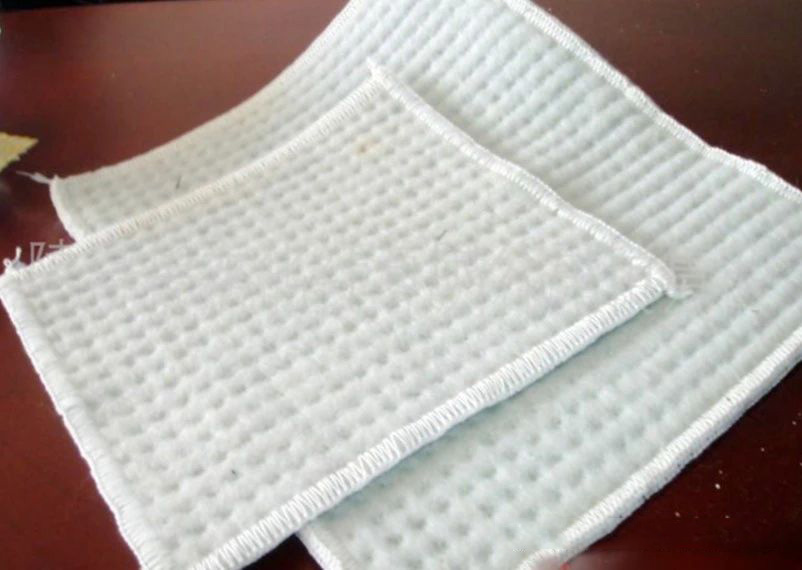Geosynthetics is a general term for synthetic materials used in civil engineering. As a civil engineering material, it uses synthetic polymers (such as plastics, chemical fibers, synthetic rubber, etc.) as raw materials to make various types of products, which are placed inside the soil, on the surface or between various soils. , to play the role of waterproof and anti-seepage, reinforcement, drainage and filtration and ecological restoration.
Overview of tailings pond
1. Hydrology
A copper mine tailings pond is located in a valley. There are ridges on the north, west and south sides separated from the surrounding water system. The tailings pond has a catchment area of 5km². There is water in the ditch all the year round, and the water flow is large.
2. Topography
The valley is generally northwest-southeast, and turns to the northeast at the Mizokou section. The valley is relatively open, with an average width of about 100m and a length of about 6km. The initial dam of the proposed tailings pond is located in the middle of the valley. The topography of the bank slope is steep and the slope is generally 25-35°, which is a tectonic denudation alpine landform.
3. Engineering geological conditions
When designing the anti-seepage plan for the tailings pond, the engineering geological survey of the reservoir area must be carried out first. The construction unit has carried out engineering geological survey of the tailings pond: no active faults pass through the reservoir area; Hard soil, the construction site category is Class II; the groundwater in the reservoir area is dominated by bedrock weathered fissure water; the rock layer is stable, and there is a thick strong weathering zone distributed in the dam site area, with high mechanical strength. It is comprehensively judged that the tailings facility site is a stable site and is basically suitable for building a warehouse.
Anti-seepage scheme of tailings pond
1. Selection of anti-seepage material
At present, the artificial anti-seepage materials used in the project are geomembrane, sodium bentonite waterproof blanket, etc. The sodium bentonite waterproof blanket has a relatively mature technology and application, and the whole reservoir area of this project is planned to be laid with sodium bentonite waterproof blanket Horizontal impermeability.
2. Reservoir bottom groundwater drainage system
After the bottom of the reservoir is cleaned and treated, a 300mm thick gravel layer is laid on the bottom of the reservoir as a groundwater drainage layer, and a blind ditch for drainage is set at the bottom of the reservoir, and a DN500 perforated pipe is laid in the blind ditch as the main guide for drainage. Blind ditches for guide drainage are set along the slope at the bottom of the tailings pond. There are 3 blind ditches in total, and they are arranged on the left, middle and right in the pond.
3. Slope groundwater drainage system
In the concentrated groundwater seepage area, a composite geotechnical drainage network is laid, and blind drainage ditches and drainage branch pipes are set in each branch ditches in the reservoir area, which are connected to the main pipe at the bottom of the reservoir.
4. Anti-seepage material laying
The horizontal anti-seepage material in the tailings reservoir area adopts sodium-based bentonite waterproof blanket. At the bottom of the tailings pond, a gravel groundwater drainage layer is set. Considering the need to protect the sodium bentonite waterproof blanket, a 300mm thick fine-grained soil is laid on the gravel layer as a protective layer under the membrane. On the slope, a composite geotechnical drainage net is set in some areas as the protective layer under the sodium-bentonite waterproof blanket; in other areas, a 500g/m² geotextile is set as the protective layer under the membrane. Part of the silty clay in the tailings reservoir area can be used as the source of fine-grained soil.
The structure of the anti-seepage layer at the bottom of the tailings pond is as follows: tailings – sodium bentonite waterproof blanket – 300mm fine-grained soil – 500g/m² geotextile – groundwater drainage layer (300mm gravel layer or natural stratum with good permeability, drainage layer Blind ditch) a leveling base layer.
Structure of anti-seepage layer of tailings pond slope (no groundwater exposure area): tailings – sodium bentonite waterproof blanket factory 500g/m² geotextile – leveling base layer.
Structure of anti-seepage layer on tailings pond slope (with groundwater exposure area): tailings – sodium-based bentonite waterproof blanket – groundwater drainage layer (6.3mm composite geotechnical drainage grid, branched drainage blind ditch) – leveling base layer .
Post time: Mar-11-2022

